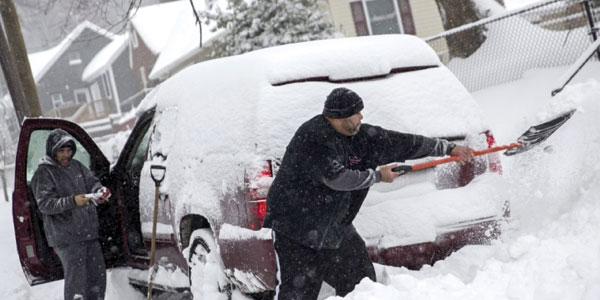
Las recientes tormentas de nieve que afectaron a muchos residentes del área noreste y del medio oeste pueden quizás no ser señales de una próxima era de hielo, pero más bien consecuencias del calentamiento global.
De acuerdo con la Administración Nacional de Aeronáutica y Espacial, y la Administración Nacional Oceánica y Atmosférica (NOAA por sus siglas en inglés), el cambio climático está afectando el planeta Tierra.
Durante los últimos años, el planeta ha registrado un aumento en las temperaturas. La NOAA ha interpretado la información de que significa que habrá menos períodos de fríos y más períodos constantes de calor. Sin embargo, durante los próximos años, el fenómeno climático El Niño, podría influenciar el clima del planeta con patrones de clima fuertes y duraderos que entregará frentes fríos y nieve provenientes del Ártico.
Michael Mann, catedrático de meteorología de Penn State University, explicó el origen de las tormentas de nieve en el sitio de Internet Yale Climate Connections.
“En el invierno, la evaporación del océano cálido se estrella contra el aire frío del ártico y se convierte en nieve”, se citó a Mann.
Los meteorólogos no han pronosticado un número de tormentas de nieve para este año. Sin embargo, le aconsejan a la gente que tomen precauciones apropiadas y vigilen el potencial para tormentas de nieve.
Could recent snowstorms be the consequences of global warming?
By Chara
The recent snowstorms that affected many Northeastern and Midwestern residents might not be signs of an upcoming ice age, but rather, consequences of global warming.
According to the National Aeronautics and Space Administration, and the National Oceanic and Atmospheric Administration (NOAA), climate change is affecting the Earth. Over the past few years, the planet has registered an increase in temperatures. The NOAA has interpreted the data to mean there’ll be fewer cold spells and more constant hot spells. However, over the next few years, the weather phenomenon El Nino (Niño in Spanish) could influence the planet’s climate with strong, long-lasting weather patterns that deliver cold fronts and snow from the Arctic.
Michael Mann, a Penn State University meteorology professor of meteorology, explained the origin of snowstorms on the Yale Climate Connections Web site.
“In the winter, the evaporation from a warm ocean collides with cold arctic air and turns (precipitation) to snow,” Mann was quoted as saying.
Meteorologists haven’t predicted a number of snowstorms for this year. However, they’re advising people to take the proper precautions and watch out for potential snowstorms.









